|
Part 1 - carving
/
Part 2 - Analysis of the weak points
/
Part 3 - Preparation of the components
|
Critical points
|
At the fifth weekend 2 garages were filled with duck parts (meanwhile my sister parked in front of the garage - thanks Rita) and it was time to make a stocktaking for the first order with the Frenchman. Beside the new framework were much more parts than I had estimated at the beginning of my restauration work. If you start to replace the framework you should work systematic. That's plausible. Who wants to divide his car again two years later just because of the failure of a cheap artikle. Finally and finite I had seen many pictures of beatiful and shining ducks meanwhile and the extra time seemed to be justified.
In the following thus a closer look at the weak points of a 2CV:
|
11. Mai 2004
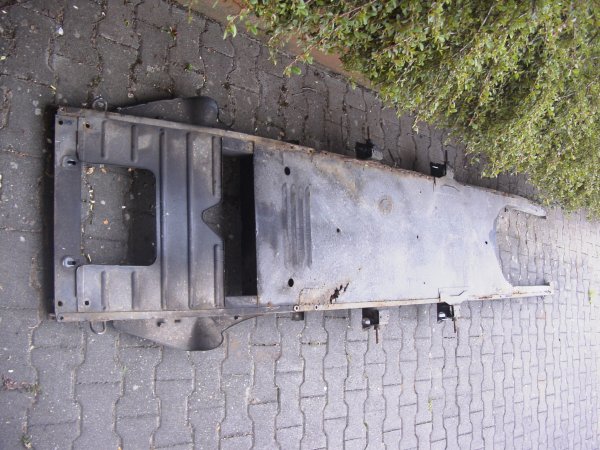
|
The framework is exposed. If perforatings are to be recognized here, an replacement should be done, since this construction unit usually rusts from the inside outward and if damage is to be recognized outwards, the interior life is usually in very bad condition. In this picture some points are to be recognized, which were already welded by a previous owner. I've bought a new galvanized framework. You schould confirm the scrapping by the scrap metal dealer because the TÜV requires for it.
There are some engeneers, who can repair a framework like that duly, but to me as a layman this was definitely no option and in addition the galvanized variant is much more durable than the original. If you would like to see how a rusty framework looks like at the inside, see column 'links'
A remark on the rust abatement: Always rip out striken areas and replace them by new metals plates. Filling and painting lasts only for one year and then it's worse than before. Rust transducers and other miracle drugs are also only useful for the salesman. More detailed information about that and about the preservation can be read in the third part of the column disassembly.
|
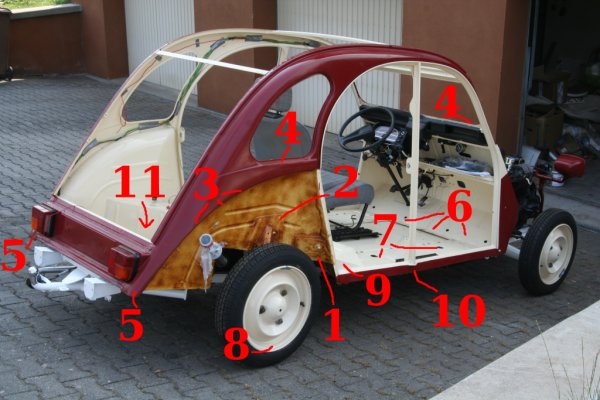
|
Weak points of the body:
Weak points are all places where at metals plates were processed in multiple layers and all cavities at the body, since the preservation ex factory was implemented only very badly. Well conserved and maintained ducks do not have to fear here.
|
25. Juli 2004
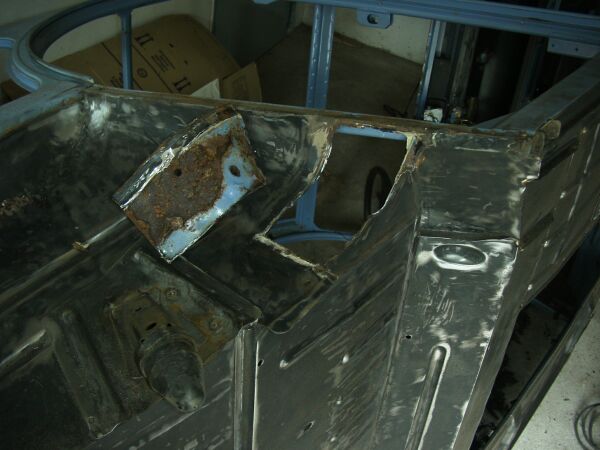
|
|
The right rear seat belt attachment (1). These seat belt attachments are covered at the interior with drapery and can't be inspected directly. Have a closer look at this point and raise the drapery possibly... The attachments of the rubber stoppers for the rear axles (2) had not to be replaced in my case. They can be inspected directly under the rear settle from the interior. As spare part you can acquire the complete interior fender, if the rust infestation requires.
|
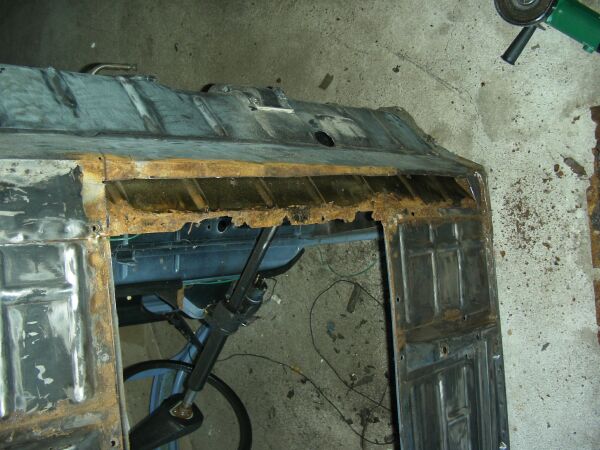
The floor space metals sheets (6). The original rubber mats in the interior ensure for the fact that once penetrated humidity does not escape any longer. The result is to be seen here.
|
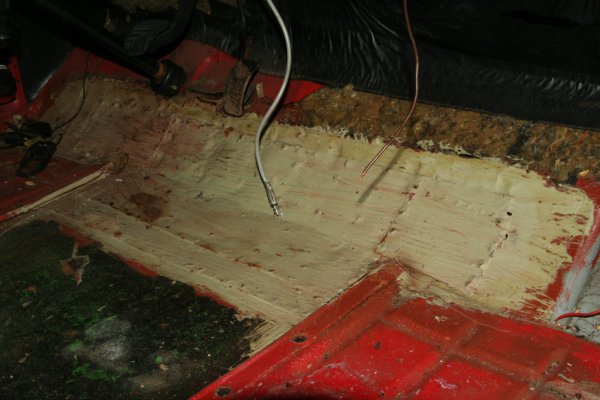
They shouldn't be repaired in that way. Here you can see a picture of my No 2, where at an amateur handicraftsman from the long list of the previous owners, welded some sheet metals above the old ones and fixed them even at the framework!. To strip down the body was probably too difficult...
|
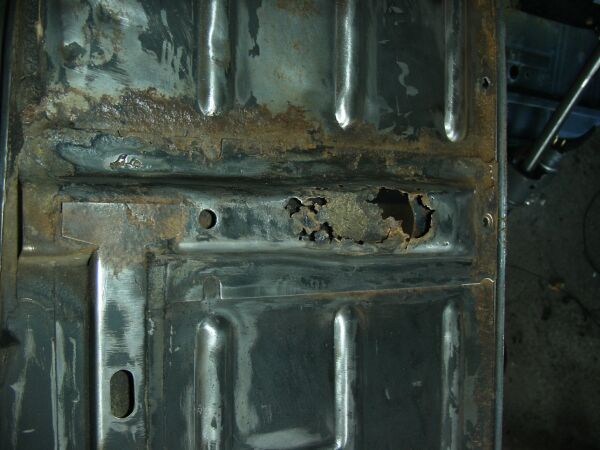
|
|
The reinforcements of the floor plates (7). The complete rust damage was recognizable when removing the bitumen underbody protection. This kind of underbody protection is not recommended. The material becomes cracked and thus humidity penetrates here. After the inspection of those floorplates I decided to buy new parts. They are not very expensive and everything else would have been patchwork.
|
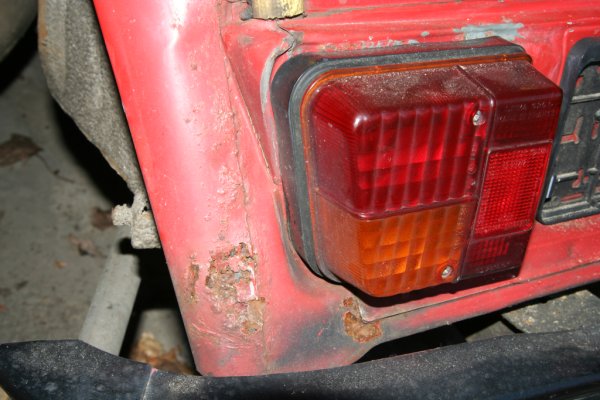
|
|
The range of the tail lamps (5) is particularly endangered, since condensation water accumulates at the deepest points of the housing. This picture is of my car No. 2, which is generally is in a worse condition.
|
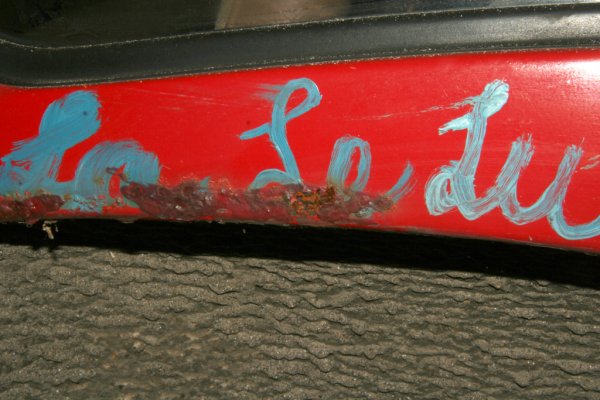
|
|
The entire edge of the housing to the rear fenders (3) is endangered. The fixing bolts are often in a bad condition and have usually to be drilled out.
|
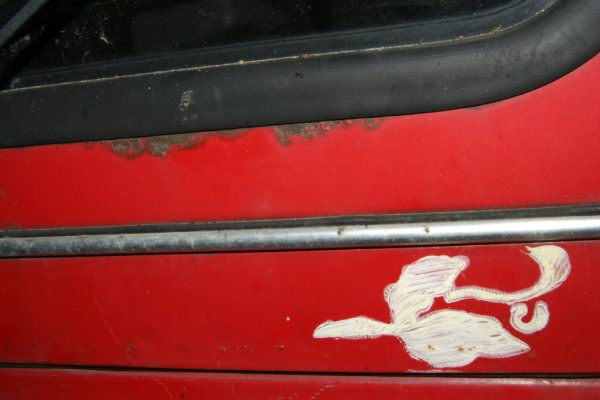
|
Among the sealing rubbers of the window frameworks (4) the humidity accomodates and promotes the corrosion. That applies also to the frameworks of the front folding windows. Here likewise a photo of duck No. 2. I guess, the replacement of those window frameworks becomes tricky.
The ventilation flap, which can also be seen here, is the next weak point.
|
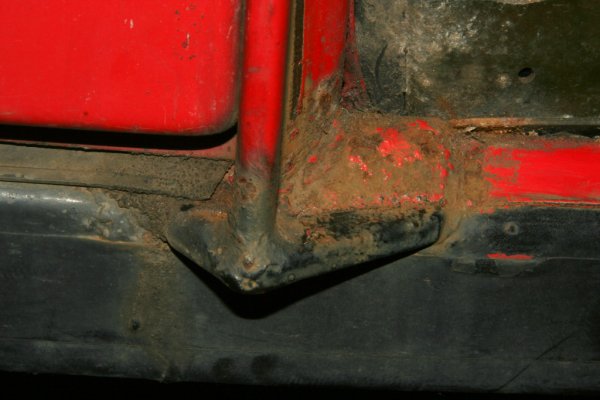
|
|
The lower part of the B-column (10). If it's not rusted through (screwdriver test) ist's not that bad.
|
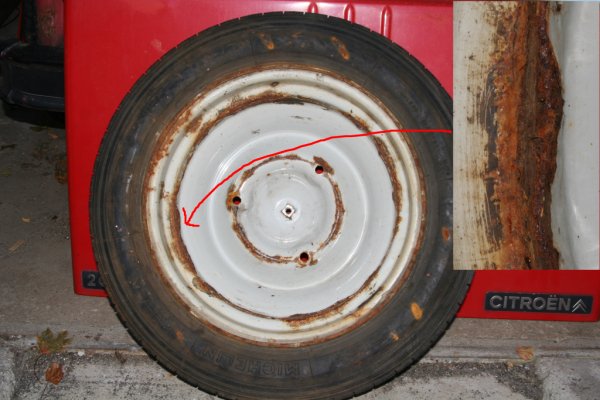
|
|
The rims (8) constist of two parts. Often they still look wery well from the front, but from the rear you can see lots of rust at the junction.
|
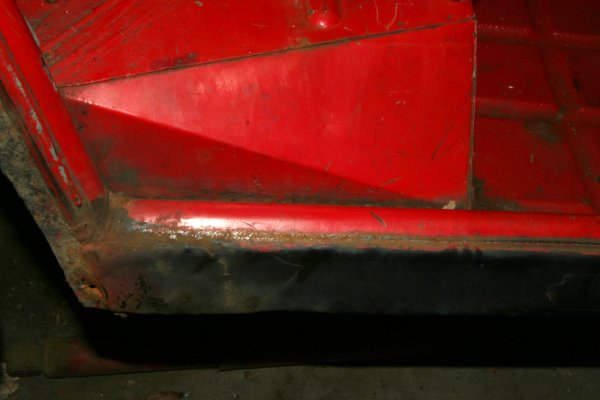
|
|
The section at the rear doors (9).
|
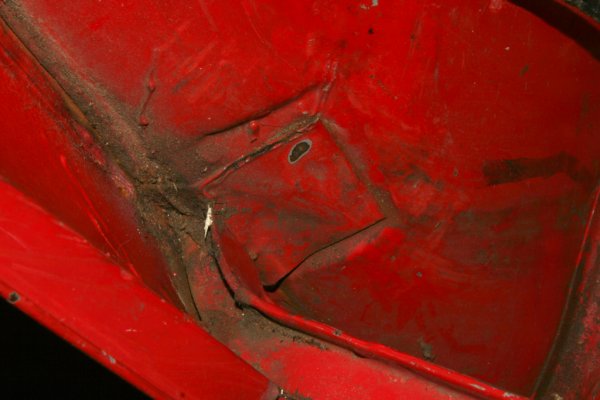
|
|
The attachment of the angle at the rear fender (11).
|
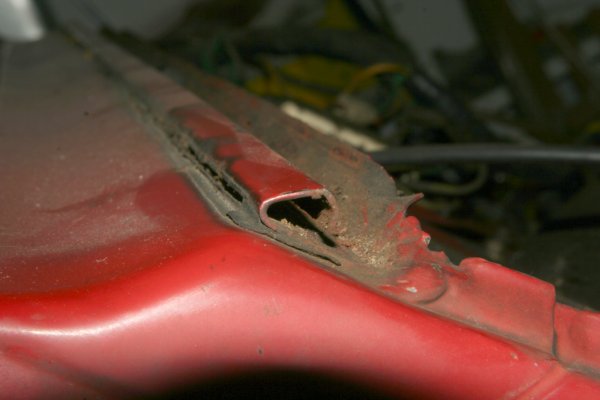
|
|
The metal creases of the rear doors, the hood and the trunk lid serving as hinges are problematic, if they are not greased from time to time.
|
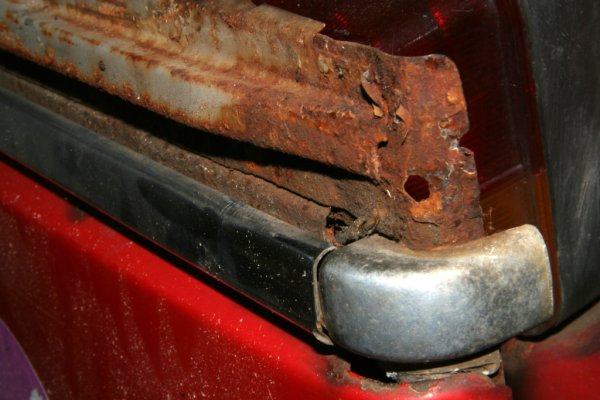
|
The attachment prop of the trunk lid and at the same time rear roof attachment is likewise endangered.
Often in bad condition, but easily to replace is the roll roof. The original version withstands water and sun only badly.
Furthermore there are the apertures of the windshield wipers, the bumpers (especially the welded front bumpers) and their attachments, et cetera, et cetera. I would like to treat them as secondary here.
At last a few remarks on the technology. The engine should start well - both in the cold, and warm condition and cause no blue, black or white smoke clouds. Little oil leakage - just one drop on the parking isn't alarming, if however the entire engine compartment is moistened after the test run, you cannot call it normal oil loss. Generally applies: If the owner tells, it's just a little job to cancel the problem, ask him to do so before the sales (otherwise leave your fingers from the vehicle).
The transmission should accept all gears soundless and just as quietly should the brakes do their job and not only at one side. The steering element should not crack. Turn in completely, while stationary and with the test run in both directions.
If you are uncertain, call for a 2CV expert when inspecting a car. It's likewise a good indication, if the previous owner sells the duck with new TÜV sticker. Often rusted ducks are offered half a year before TÜV expires.
The purchase at a special duck garage is the best decision for laymen. You have to pay more Euros, but it's worth it.
Enough of the negative points. You could start thinking, the robustness of the 2CV was just a rumour of the manufacturer...
|
|
Back to part 1 - carving
Forward to part 3 - Preparation of the components.
|